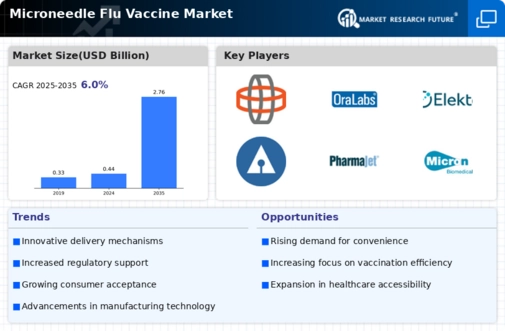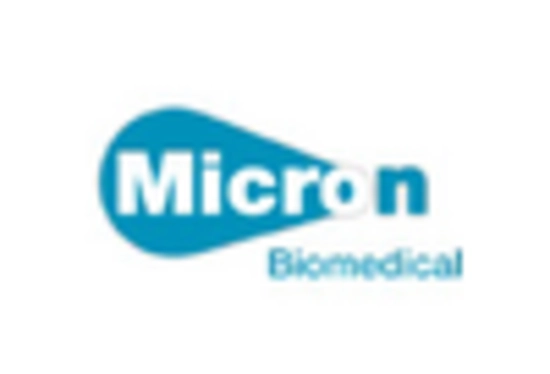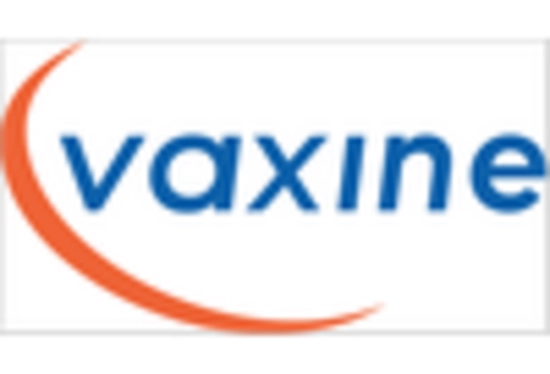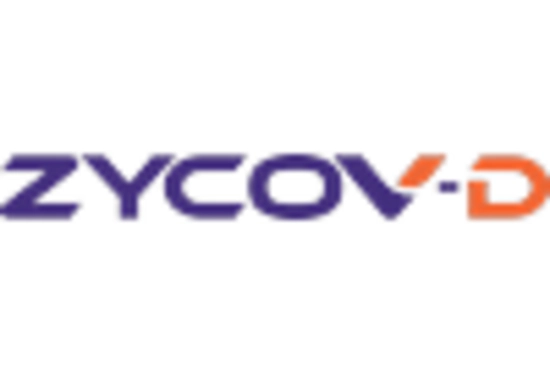The Microneedle Flu Vaccine Market is currently characterized by a dynamic competitive landscape, driven by innovation and strategic partnerships among key players. Companies such as Vaxart (US), AstraZeneca (GB), and Bharat Biotech (IN) are at the forefront, each adopting distinct operational focuses that shape the market's trajectory. Vaxart (US) emphasizes its oral vaccine delivery system, which could potentially enhance patient compliance and broaden market reach. AstraZeneca (GB), leveraging its extensive global presence, appears to be concentrating on strategic collaborations to enhance its microneedle technology. Bharat Biotech (IN) is likely focusing on regional expansion and local manufacturing capabilities to cater to emerging markets, thereby positioning itself as a competitive player in the global arena.
The business tactics employed by these companies reflect a concerted effort to optimize supply chains and localize manufacturing processes. The Microneedle Flu Vaccine Market is moderately fragmented, with several players vying for market share. However, the collective influence of these key players is significant, as they drive innovation and set industry standards. Their strategies not only enhance operational efficiencies but also contribute to a more resilient supply chain, which is crucial in the current global health landscape.
In August 2025, Vaxart (US) announced a partnership with a leading biotechnology firm to co-develop a next-generation microneedle flu vaccine. This collaboration is strategically important as it combines Vaxart's innovative delivery technology with the partner's expertise in vaccine development, potentially accelerating the time to market and enhancing product efficacy. Such partnerships may also facilitate access to new markets and broaden the scope of their product offerings.
In September 2025, AstraZeneca (GB) launched a new initiative aimed at integrating artificial intelligence into its microneedle vaccine development process. This move is indicative of a broader trend towards digital transformation within the pharmaceutical industry. By leveraging AI, AstraZeneca (GB) aims to streamline research and development processes, thereby reducing costs and improving the speed of innovation. This strategic pivot could position the company as a leader in the microneedle vaccine space, particularly as the demand for efficient and effective vaccination solutions continues to grow.
In July 2025, Bharat Biotech (IN) expanded its manufacturing facility to increase production capacity for its microneedle flu vaccine. This expansion is crucial as it not only enhances Bharat Biotech's ability to meet rising global demand but also underscores its commitment to local manufacturing. By bolstering its production capabilities, the company is likely to improve its competitive edge, particularly in regions where access to vaccines is limited.
As of October 2025, the competitive trends in the Microneedle Flu Vaccine Market are increasingly defined by digitalization, sustainability, and the integration of advanced technologies. Strategic alliances among companies are shaping the landscape, fostering innovation and enhancing product offerings. Looking ahead, it appears that competitive differentiation will evolve from traditional price-based competition to a focus on innovation, technological advancements, and supply chain reliability. This shift may ultimately redefine how companies position themselves in the market, emphasizing the importance of agility and responsiveness to changing consumer needs.


















Leave a Comment